To start off Motive Academy, let’s dig into answering a few questions. What is Motive? What problems is Motive solving? Who uses Motive?
Perhaps you already know the answers to these questions if you were part of the process of vetting Motive, but you will likely still learn something new.
Learn the answers and more in this lesson!
To Do:
- Choose if you’d like to learn this lesson via Video or Written Text. You’ll see both options below. If you want to see full details, choose the Video option.
- Watch, Don’t Create. This is a Follow Along lesson and we want you to feel free to open Storyflow and click through as the lesson progresses. Don’t worry – you’ll create in Storyflow in a few short lessons.
- Optional: It’s suggested you open another tab in your browser with the Motive Glossary. This way as you move through the lesson, you can look up any terms you are unfamiliar with.
Video Lesson
Watch the following video.
Written Lesson
What Is Motive?
In this first part of the Motive Platform Essentials Pathway, I’ll take you through some information about Motive as a company, what problems Motive solves, and who is using Motive.
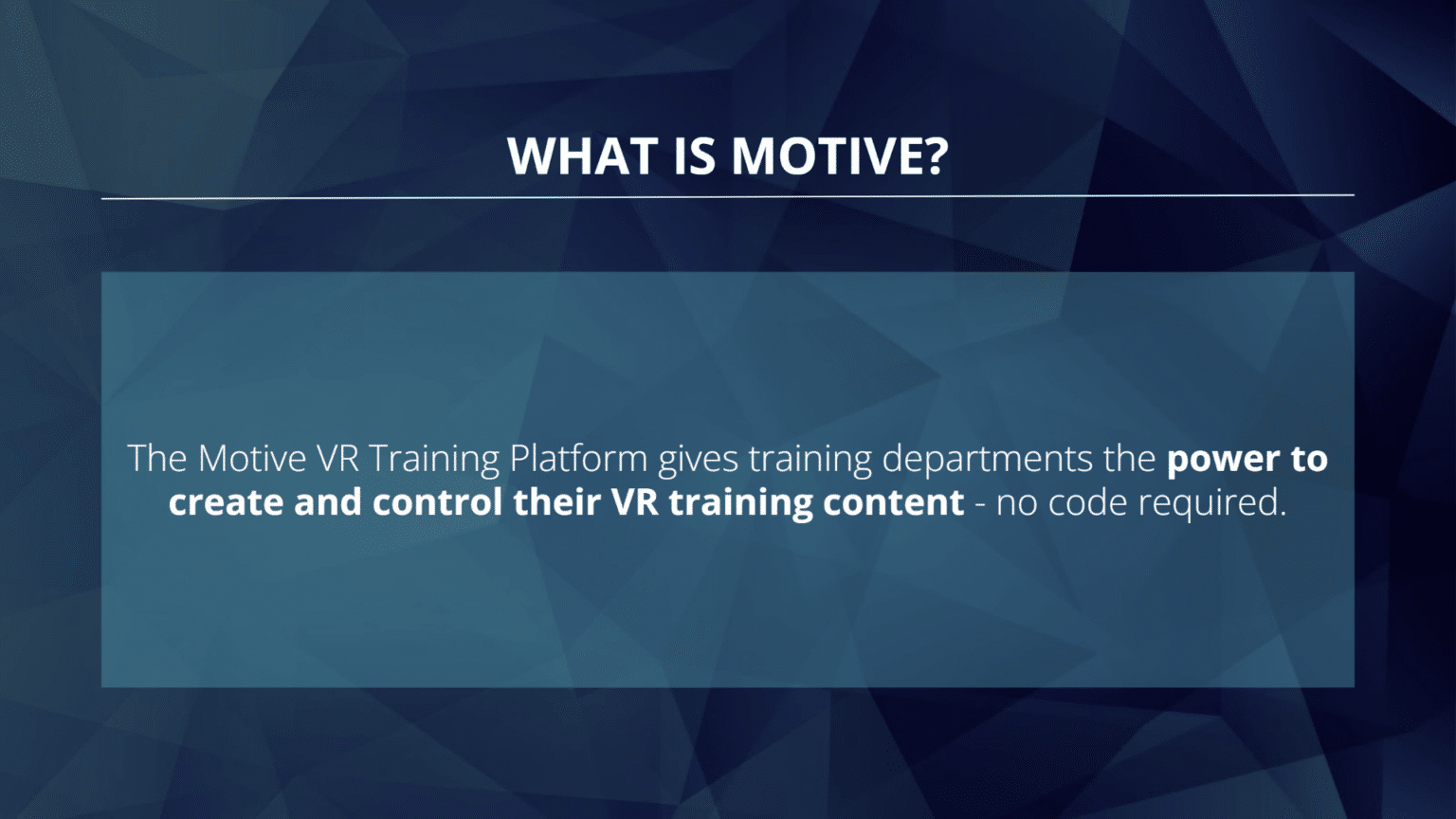
Our product allows you to seamlessly create, edit, and deploy VR training modules. Let’s look at an overview of taking a real life situation and converting it into VR Training:
Why you would use Motive
To illustrate this topic, I’m going to dig into what we call the Motive Revolution – taking VR training from 1.0 to 2.0. If you’ve tried to implement VR training before, you might see some familiar topics.

In VR Training 1.0 , your non-technical training experts control over the creation of content is like a game of telephone. They tell a developer or project manager the training that they want to see. This includes the 3D environment that training will take place in as well as all the training that will take place in the environment. They will provide documentation and even videos. From there, the developers who are not experts in training, especially your training, will translate what you requested into VR.
Inevitably things are missed, changed or just don’t work in the new medium. Your training team won’t know any of this until the build of the training is provided weeks, but usually months, later.
On top of that, you find the VR training doesn’t connect with existing systems.
Based on what we just covered, here are the challenges of VR Training 1.0:
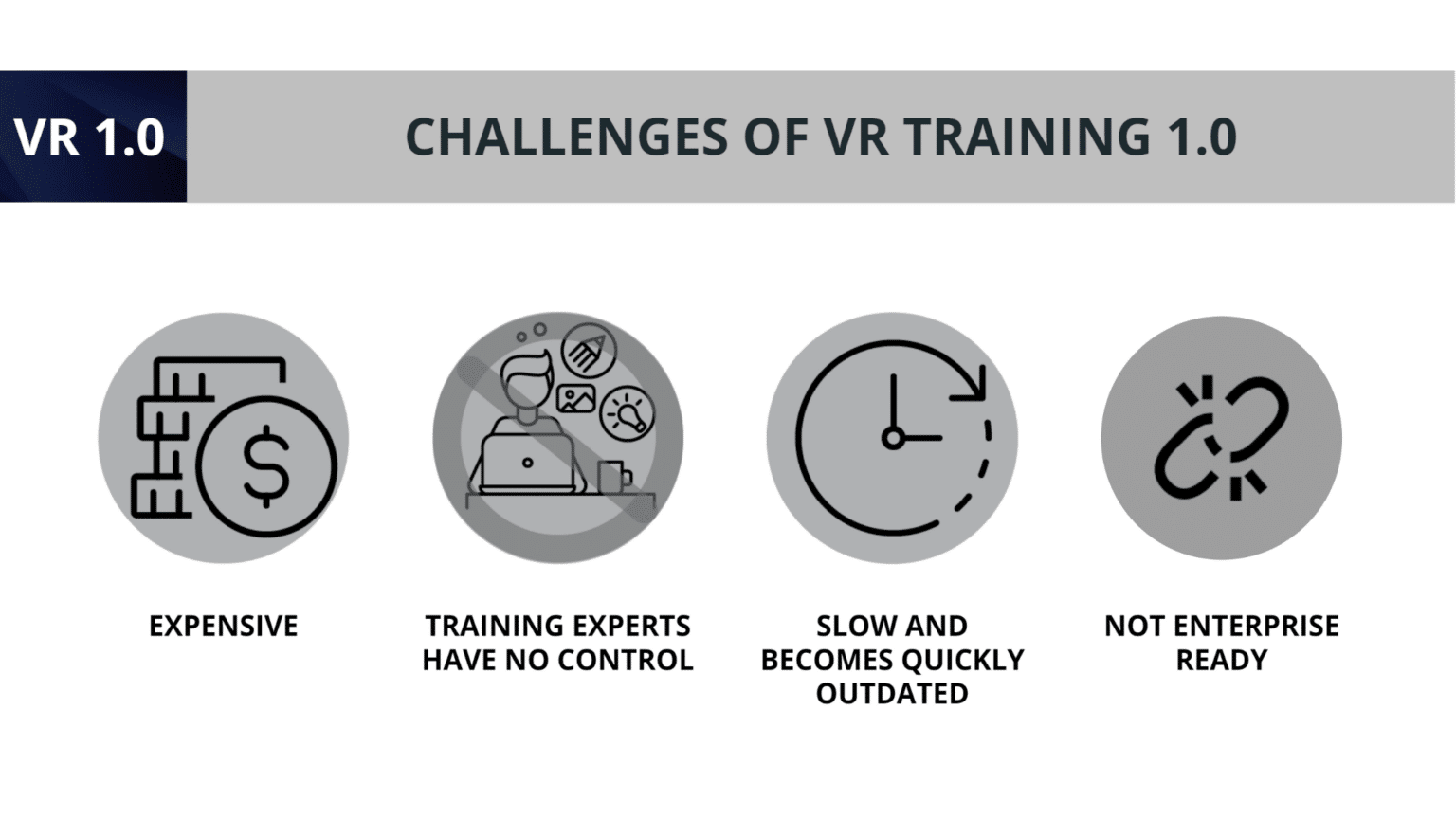
Does this sound familiar to you?
If so, I hope you are excited for VR 2.0.
Let’s take a look at VR training 2.0 with Motive:
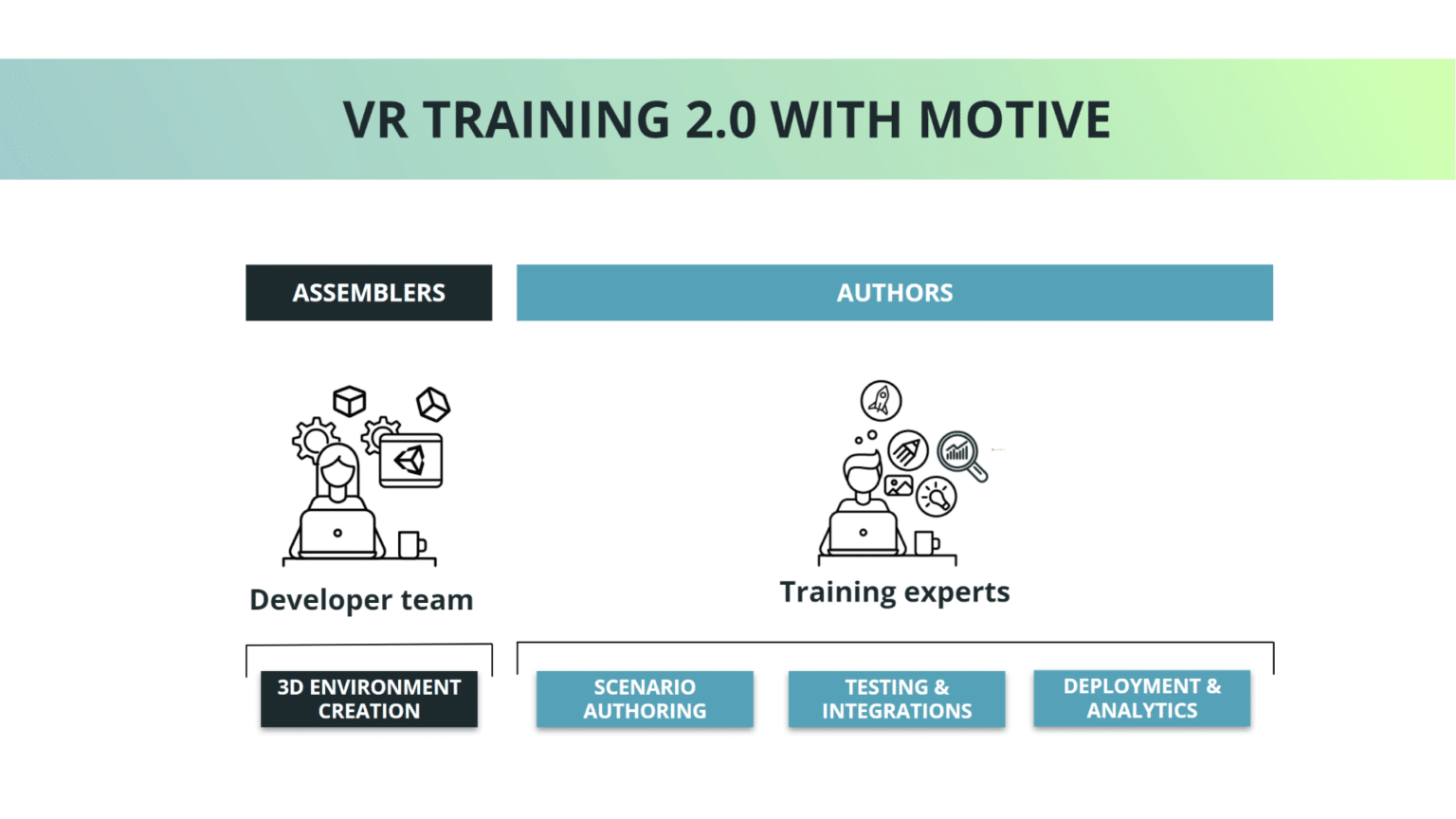
We’ve classified the team members into Assemblers (the Developer team) and Authors (the Training Experts).
The Authors provide the Assemblers with the photos and details of the environment that the training will take place in, not the training itself.
The Assemblers will create the environment but that’s where their role ends. Once the environment is created, all the training that happens in the environment can be created by the Authors using a non-technical authoring tool.
That means they can easily test as they build out the training just like they would with e-learning. They are back in charge of the content creation process.
Hopefully you can see the benefits of VR Training 2.0 with Motive:
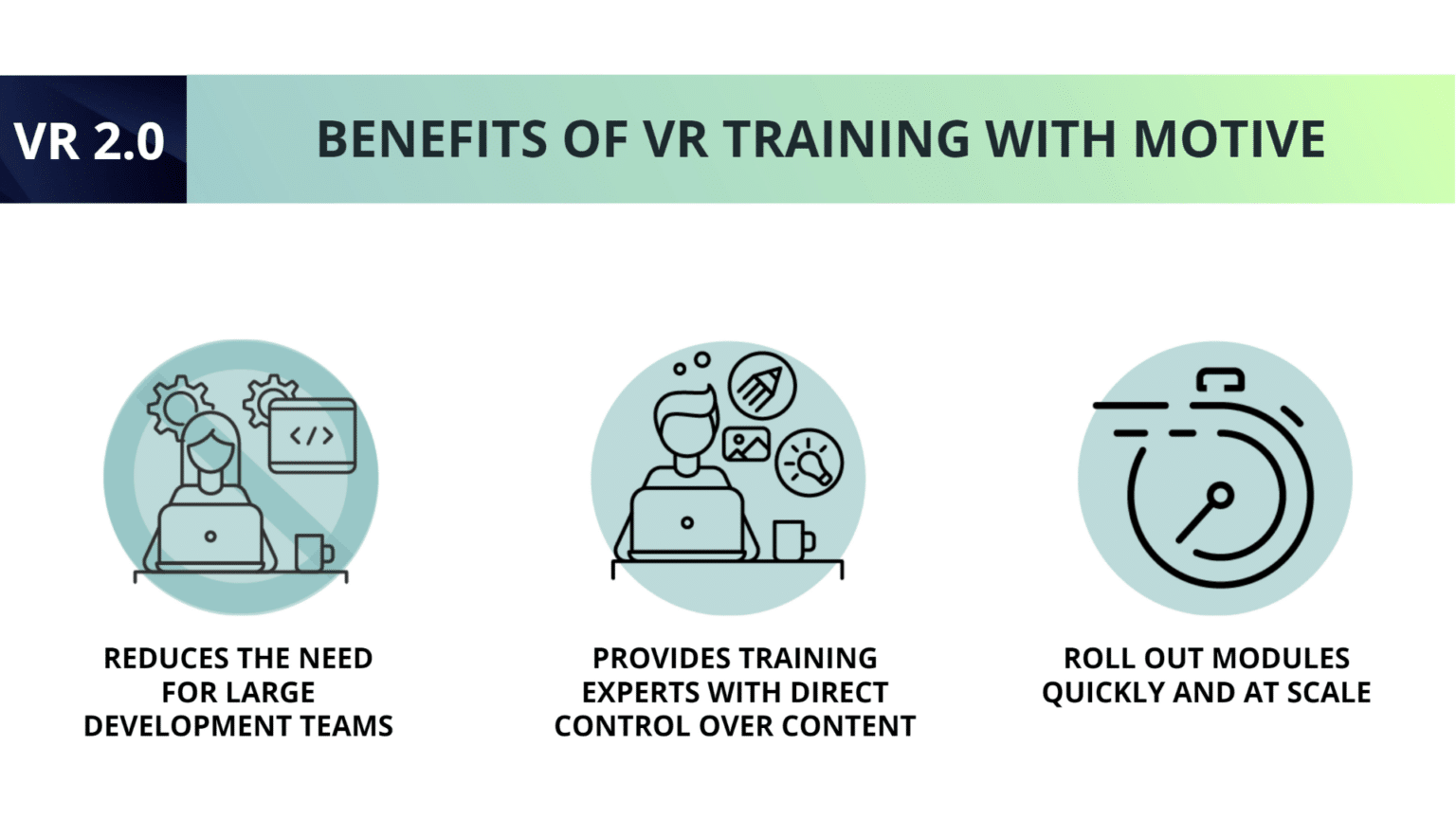
We can drill down the Why you would use Motive very simply. Traditional VR training is hard to create. Motive gives you the tools and the team you need to build meaningful VR training into your learning strategy.

Who is using Motive
Here are the industries our customers come from.
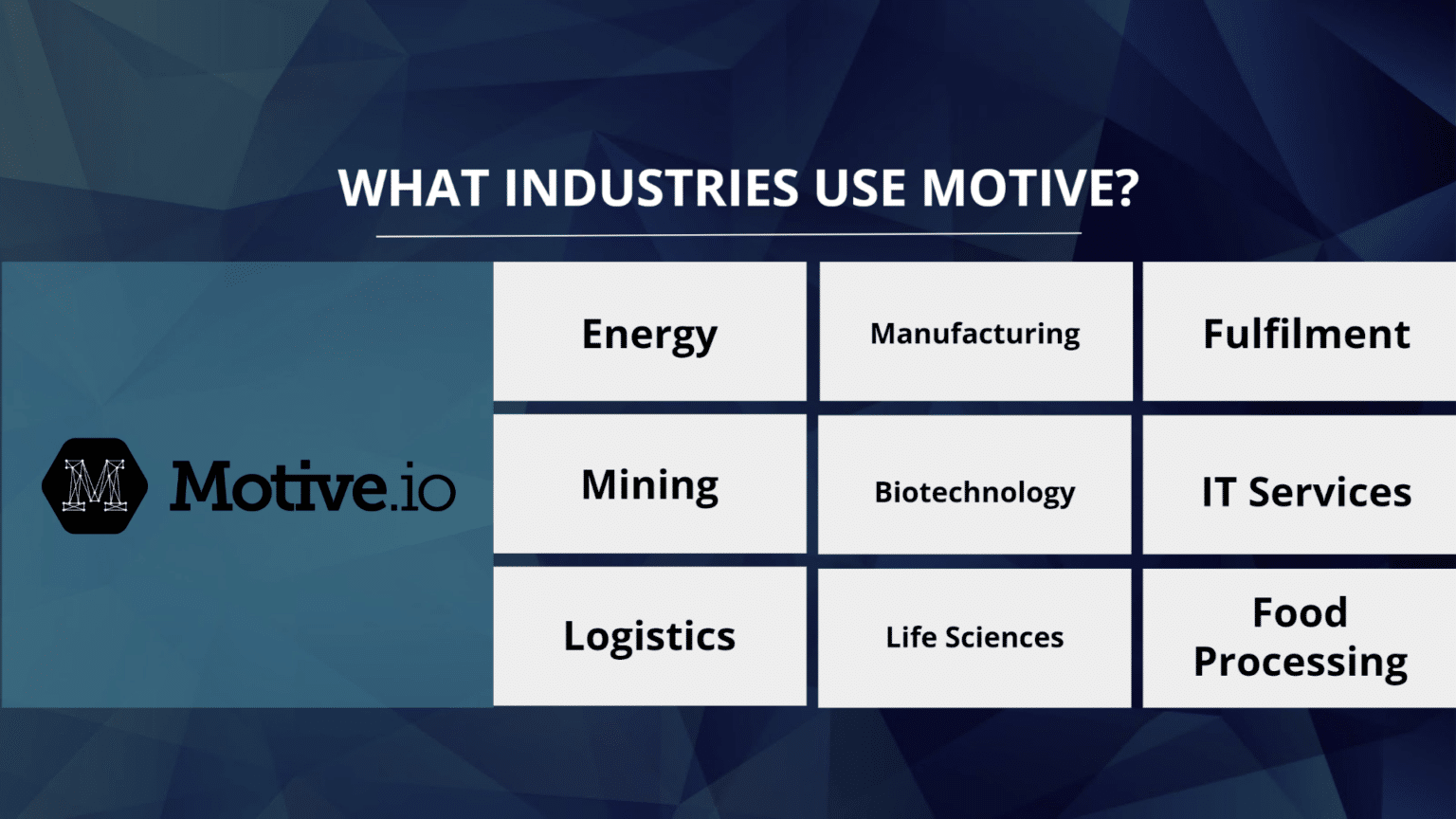
Ideal VR Training Use Cases

Our customers come from a variety of industries and their needs for VR training are quite varied. Whether it’s hard skill training, procedural training, safety training, or softskills training.
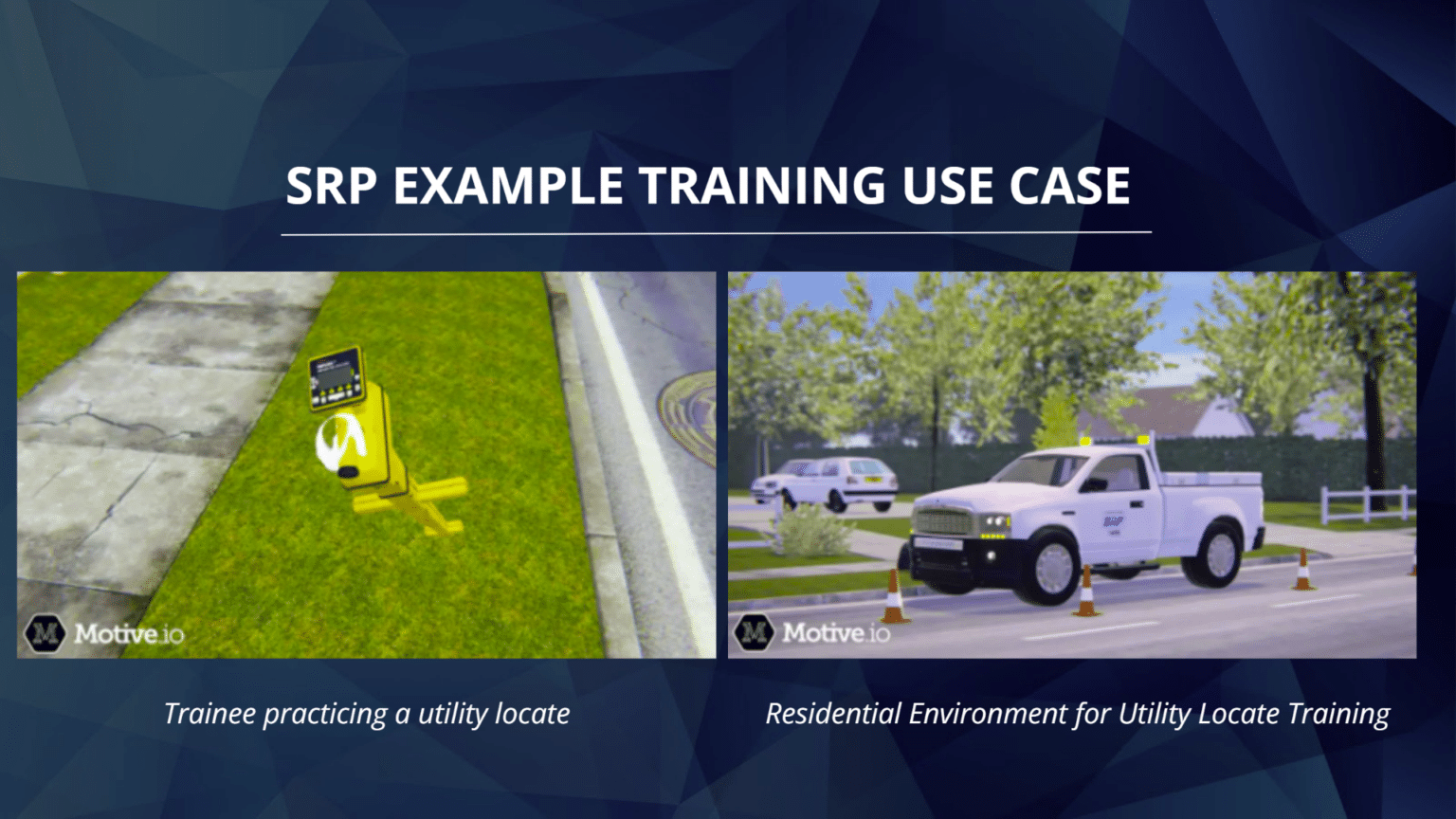
Salt River Project, or SRP, is one of Arizona’s largest utility companies, supplying water and power to over 2 million people in central Arizona. When new employees join the workforce, one of the most dangerous tasks they need to learn is how to locate underground utilities before starting a job.
The procedure can be risky because of busy roadways and unpredictable traffic.
VR is the perfect solution for replicating the stress of the task while keeping the uninitiated safe.
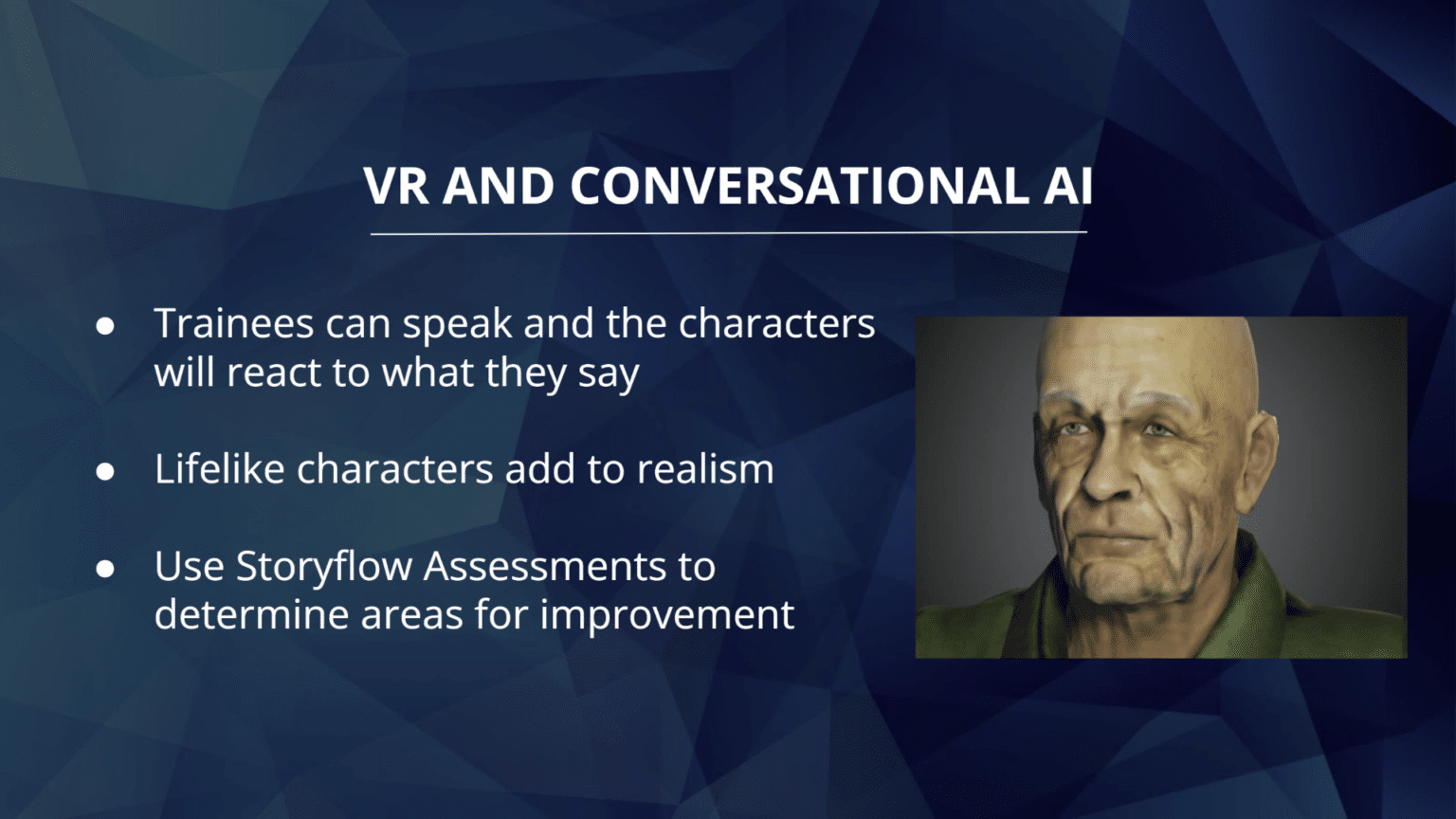
Another example of leveraging Motive is using the Conversational AI features to give your employees the ability practice having difficult or sensitive conversations in a risk and judgement free environment.
Impacts of Using VR in Training
Let’s take a look at some impacts of using VR in Training:

How Will You use Motive?
As we finish off this tutorial, I’d like you to think about how you will use motive.
What was your key takeaway from this session?
What do you think Motive will allow you to do that you couldn’t do before?
What do you want to create with Motive?
I hope you are as excited as we are to start your Motive learning journey!
